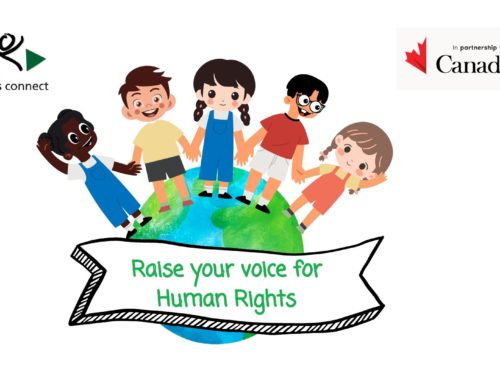On April 5th, the Human Rights Council adopted its biennial resolution on the rights of the child with a focus on inclusive social protection (55/29). This resolution was adopted by consensus, with 6 hostile amendments rejected. Although the main theme of this year’s resolution was inclusive social protection, the resolution also included a new section on child rights mainstreaming.
Making social protection inclusive for children
Let’s unpack first what the resolution says on inclusive social protection for children. The resolution underscores the importance of all children having access to inclusive social protection, which remains to date beyond the reach of more than 1.77 billion children globally. Key takeways for the resolution are:
- It stresses that social protection should be inclusive and reach all children, including those in vulnerable situations such as children in forced displacement, migrant and refugee children and children with a disability.
- The resolution encourages States to progressively move towards universal inclusive social protection coverage, including by implementing universal child benefits without discrimination of any kind and integrating them with complementary services.
- It calls on States to establish a comprehensive child rights-based approach to inclusive social protection, ensuring that no child is left behind by making social protection universal through comprehensive child and family benefits and financial and material support for parents or caregivers, such as parental leave and affordable, quality childcare, as well as universal access to basic services, including health services, equal access to free, quality inclusive education, a safe digital environment, water and sanitation, affordable nutritious food and adequate housing.
- The resolution urges States to ensure that all children have access to justice and timely, effective, inclusive, gender-, disability- and age-responsive and trauma-informed remedial victim support and reparation and guarantees of non-repetition when their rights are violated in the context of inclusive social protection.
Child Rights Connect, along with its members of the taskforce on inclusive social protection, has been closely following the resolution on inclusive social protection to and conducted targeted advocacy efforts with both the core group and other states during informals. By closely following the negotiations of the resolution, we were also able to pushback on attempts by some States to shift the focus of the resolution from children as the main right-holder of the resolution to prioritizing the protection of the family.
Based on these efforts, the resolution includes:
- A strong diversity angle throughout the text, including language on gender, age, and disability.
- References to street children, minorities, Indigenous Peoples and persons with disabilities.
Child Rights Mainstreaming
The resolution also includes a new section on Child Rights Mainstreaming, stepping up the Council’s efforts towards children’s rights.
The resolution builds on the OHCHR report presented at the March session on “Strengthening a child rights-based approach in the work of the United Nations”. The report makes clear recommendations on how to implement child rights mainstreaming within the UN system including through the integration of structured and child-friendly modalities for the participation of children in its working methods, with due regard to the safeguarding of children, and informing children about those opportunities.
The resolution makes:
- Explicit references to child participation in encouraging States and the United Nations to support diversity and promote child-friendly modalities in local, national and international forums.
- A request to the UN Secretary- General to expand the capacities of the Office of the High Commissioner, to advance child rights mainstreaming, in particular child participation and child safeguarding, in the work of the Office and the human rights accountability and investigative mechanisms.
- A request to the High Commissioner for Human Rights to prepare a report on child rights mainstreaming across the United Nations as well as the whole UN human rights system to integrate a child rights perspective into the implementation of their mandates.
Child Rights Connect highly welcome these steps to strengthen the capacity of the UN Office for Human Rights to mainstream child rights and advance the implementation of the Secretary-General Guidance Note on Child Rights Mainstreaming.
What is next?
Going forward, we will seek to maintain the momentum created by the resolution and continue to advance this agenda through future opportunities such as by organizing a webinar for our network and partners on this resolution and how it can strengthen the social protection agenda. The World Summit on Social Development 2025 will prioritize social protection and fill gaps of the 1995 Copenhagen Declaration and Programme of Action. We will closely be following how we can engage with members to strengthen child rights in this context.
On child rights mainstreaming, we will also explore organizing a round table with interested from diverse regions on child participation at the HRC to improve working methods. For the next OHCHR report on child rights mainstreaming, Child Rights Connect and members will undertake advocacy to ensure that the next report has a concrete focus on the implementation of child rights mainstreaming within a specific UN mechanism.
The next Annual Day on the Rights of the Child (ADRC) in 2025 will discuss the theme of early childhood development. The resolution ensures appropriate resources to support and facilitate the participation of children, ensuring that they have easy access to relevant premises, and to make the discussion fully accessible to children and to persons with disabilities.
In 2026, the ADRC will focus on the theme of the rights of the child and violations of the human rights of children in armed conflicts. The High Commissioner for Human Rights will prepare a report on this theme, in close cooperation with all relevant stakeholders, including through consultations with children themselves, to inform the ADRC and the next resolution on the rights of the child. This report will also be made in a child-friendly format and will be presented to the Human Rights Council at its 60th session.










Leave A Comment